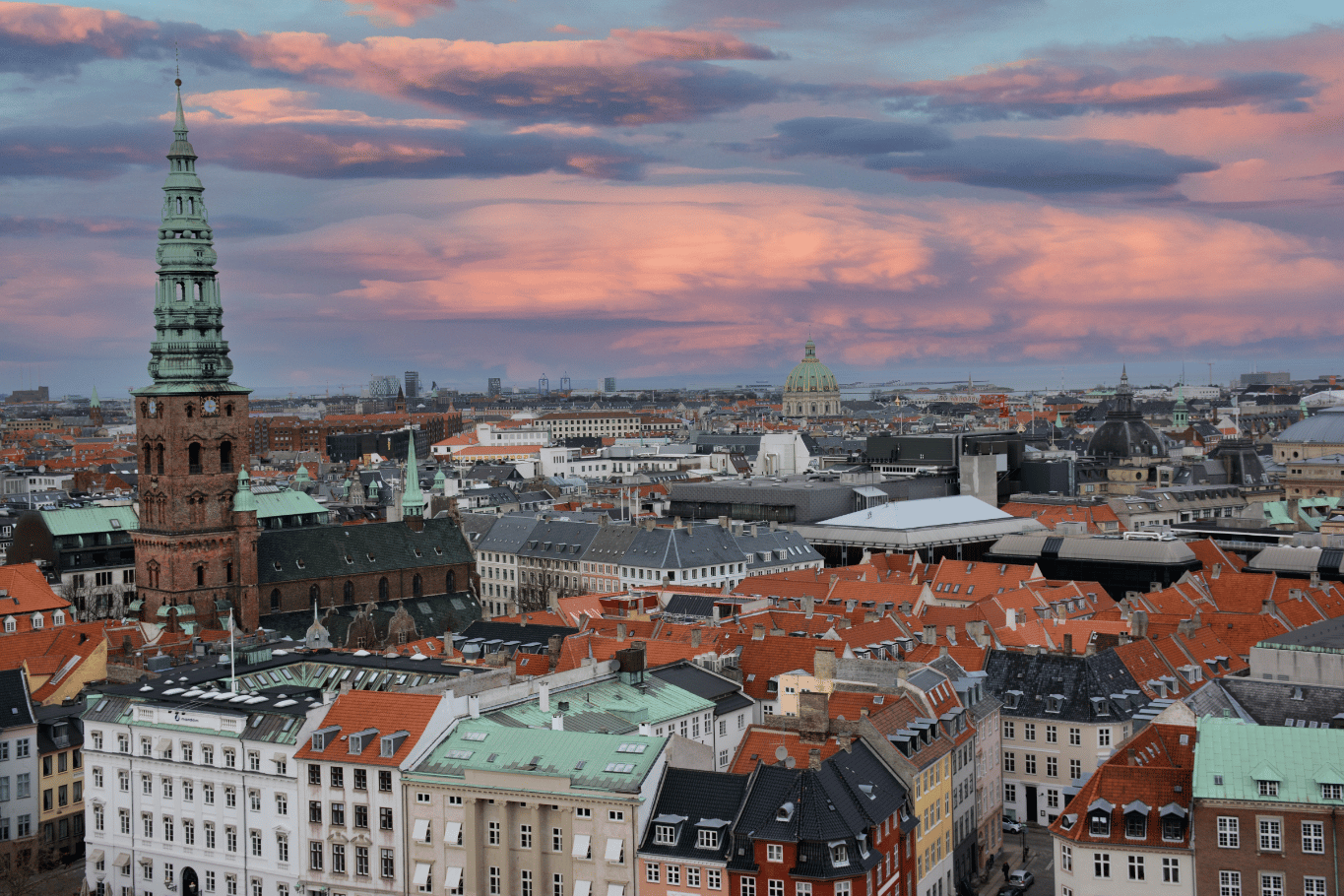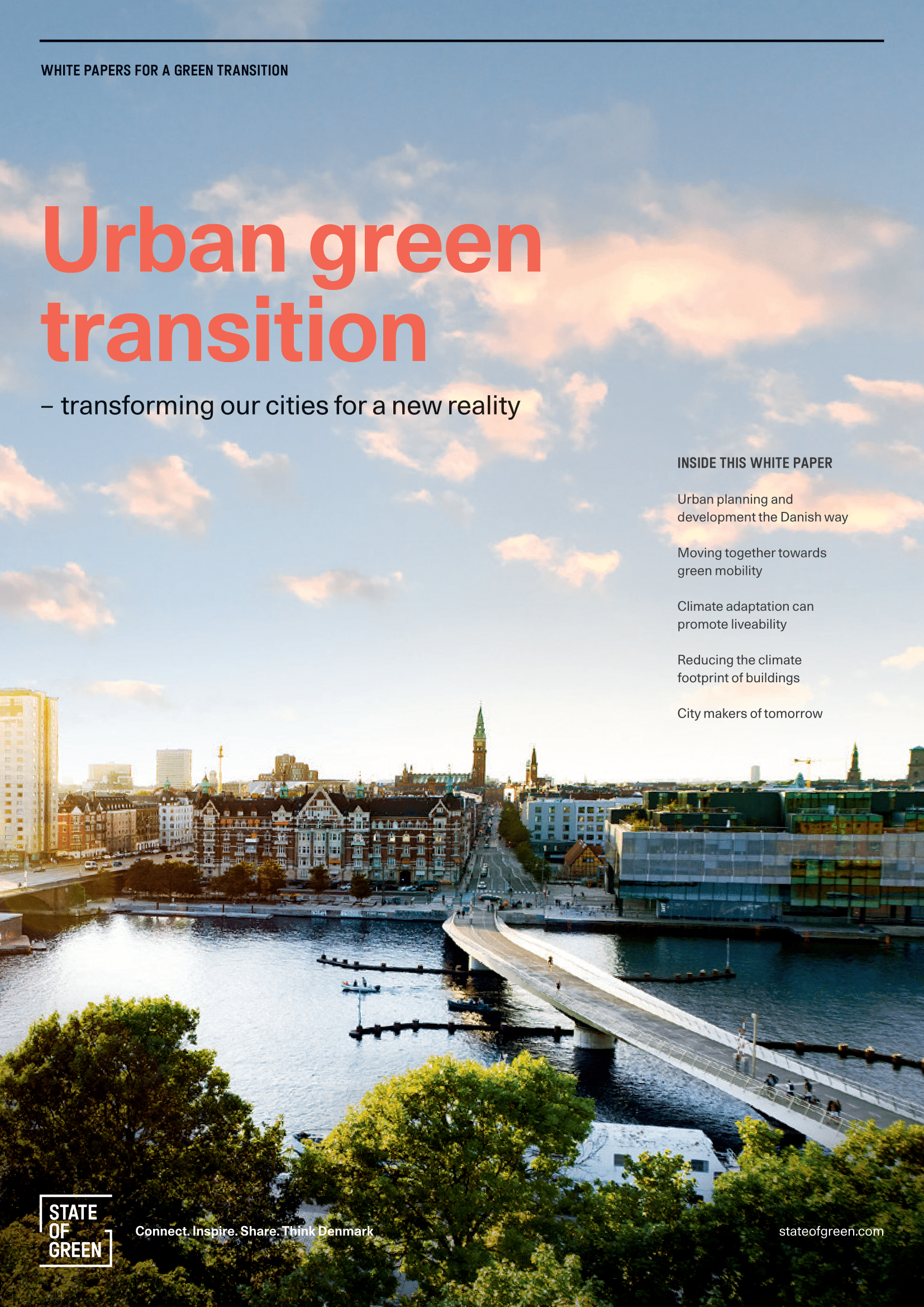Webinar: Collaborative urban transformation
Did you miss the webinar or do you just want to relive the highlights again? Watch the recording of the webinar in its full length.
Watch the webinarNews
Healthy and safe buildings
Buildings
Energy efficiency in buildings
+1


Did you miss the webinar or do you just want to relive the highlights again? Watch the recording of the webinar in its full length.
Watch the webinarBuildings and cities are significant sources of global greenhouse gas emissions, accounting for around 70 percent of global CO2 emissions, mainly from energy consumption in buildings and transportation. With the UN projecting that nearly 70 percent of the global population will reside in cities by 2050, urban areas have become a critical focus for climate action.
On 18 September, State of Green brought together thought leaders from CONCITO, C40, VELUX and Ramboll, to share insights on how cities and companies can drive the climate transition. The dialogue explored sustainable practices and strategies, as well as tangible solutions and tools, that not only target CO2 reduction but also enhance overall well-being in cities and buildings.
Relive highlights from the presentation by CONCITO
Download the presentationLocal governments play a crucial role in mitigating climate change by acting as consumers, suppliers, legislators, and facilitators. They can reduce emissions by transitioning their own operations to be more sustainable, managing services like waste collection and public transit in eco-friendly ways, enacting local legislation to support green initiatives, and using their influence to encourage community-wide action.
Emphasising the importance of how local governments can contribute to mitigating climate change, Tue Damsø, Senior Advisor at the Danish green think tank CONCITO, presented the role of local governments in multi-level governance.
The DK2020 Project is a prime example of local climate action in Denmark. It involves 96 of 98 Danish municipalities developing Paris Agreement-compatible climate action plans (CAPs). These municipalities aim for a 76% reduction in overall Danish emissions by 2030 compared to 1990, with current planned actions expected to achieve a 73% reduction. The project has significantly built capacity for climate action, raising awareness among decision-makers, building knowledge within municipal administrations, and engaging local communities.
DK2020 began as a pilot project funded by Realdania with CONCITO and C40 as project lead providing technical support for the Danish municipalities. Subsequently, the project has been expanded into a full-scale partnership between Realdania, KL (Local Government Denmark) and the five Danish Regions that provide equal funding and constitute the project leadership.
Discover the case: DK2020 and the Climate Alliance: Driving ambitious, regional climate action plans
Relive highlights from the presentation by C40 Cities.
Download the presentationCreating a climate action plan can act as a key tool for cities to drive urban green transition. This was the message from Kathrine Weirs, Project Manager, the Climate Alliance, from the C40 Cities Network.
The C40 network is a coalition of nearly 100 leading cities globally, committed to combating climate change through collaborative efforts. A core focus of C40’s work is supporting cities in developing robust climate action plans, which are key tools for driving the urban green transition. These plans guide cities in aligning with the 1.5°C target by halving emissions by 2030, integrating climate considerations into urban planning, and targeting high-polluting sectors like energy and transportation. By fostering equitable and resilient communities, facilitating collaboration, and providing a comprehensive Cities Climate Transition Framework, C40 empowers cities to lead the global shift towards sustainable urban development.
By equipping cities with comprehensive climate action plans, C40 empowers them to lead the way in the global urban green transition, ensuring that efforts are inclusive, ambitious, and geared toward a sustainable future.
Relive highlights from the presentation by VELUX
Download the presentationAs humans spend 9/10 of our time inside, the impact of inside livability is an important and often overlooked topic. Julie Kjestrup, Head of Policy and Thought Leadership at VELUX joined the online session, with a call to action on creating climate-friendly buildings that also support better indoor livability.
VELUX is committed to creating more sustainable, livable, and healthy buildings by focusing on better indoor climate and overall well-being. For over 80 years, the company has brought daylight and fresh air into homes worldwide, emphasizing the health and well-being of building occupants alongside environmental and energy concerns. Their journey into sustainable living in buildings began in 1999, leading to more than 30 full-scale demonstration building projects across 22 countries. VELUX’s approach highlights the importance of holistic building solutions that improve indoor environments for people to live, work, learn, and play.
A prime example of this approach is The Healthy Buildings Barometer 2024. Developed in partnership with the Buildings Performance Institute Europe (BPIE), the report examines the state of European buildings and advocates for healthier indoor environments. The report emphasizes that healthy buildings are crucial for people’s well-being, with one in four Europeans currently living in buildings with poor indoor air quality. This annual report, now in its 8th edition, aims to substantiate and measure the benefits of healthy buildings, providing a framework for policymakers and stakeholders to promote renovations and practices that enhance both mental and physical health while being sustainably built and managed.
Discover Healthy Buildings Barometer: A framework for healthy, sustainable, and resilient buildings
Another project underscoring VELUX’s commitment to creating sustainable, healthy and holistic projects is Living Places; An initiative designed to inspire and demonstrate that creating sustainable living environments is achievable today. It focuses on five key principles: Healthy, shared, simple, adaptive, and scalable. The project rethinks every aspect of a building, from materials and construction to architecture, to significantly reduce environmental impact. The result is homes with a carbon footprint three times lower than the average Danish home, showcasing that it is possible to build people-positive, low-emission housing right now. Living Places aims to offer solutions that are not only sustainable but also adaptable and scalable, catering to the varying needs of communities while fostering a strong sense of well-being.
Discover Living Places: Building low-carbon and more sustainable buildings
Relive highlights from the presentation by Ramboll
Download the presentationProviding the quantitative perspective to the webinar, Andreas Sørensen, Digital Lead Sustainability at Ramboll, shared the importance of sharing qualitative data as a step towards advancing decarbonisation efforts in the building industry.
Accurate and consistent data enables stakeholders to make informed decisions that drive the transition to low-carbon solutions. However, there are numerous sources of uncertainty across carbon assessment methods, such as varying life cycle stages, building elements, data sources, and reference study periods. Addressing these inconsistencies is vital for providing actionable insights and ensuring transparency in the industry.
Ramboll’s CO2mpare database is an example of how sharing detailed carbon data can support decarbonisation. The database collects Environmental Product Declarations (EPDs) and normalizes data across various life cycle stages, building elements, and reference periods. This comprehensive approach allows for better benchmarking and comparison, facilitating more accurate assessments of building projects’ carbon footprints. By expanding the scope and granularity of the data, the CO2mpare database aims to drive the industry forward, providing the necessary transparency and insight to inform sustainable practices.
The goal is to make CO2mpare an interactive tool that provides clarity and consistency, empowering decision-makers and the industry to take concrete steps toward reducing emissions. Through this initiative, Ramboll showcases the value of qualitative data in shaping a more sustainable future for the built environment.
Discover the CO2mpare: Open access carbon database for buildings
Relive the full webinar on Collaborative urban transformation: Glocal and local climate action.
Join us for an exclusive network event at the 2024 ICLEI European Conference on Sustainable Cities & Towns.
Discover the eventJoin State of Green for a site visits along with an exclusive after-hours networking event in Kedelhallen, Aalborg, where the entire value chain in urban development will be brought together—from city developers to architects.
With the overall theme of the ICLEI European Conference – “Sustainable Cities and Towns: 30 Years of Transformation” – in mind, this networking event will facilitate face-to-face dialogue on how we can shape sustainable urban futures through local action and international collaboration. Emphasis will be placed on the intersection of urban development, climate action, and sustainability, ensuring that we address challenges holistically by involving every part of the urban development process.
Get a chance to meet like-minded peers, experts and solutions providers from Denmark’s urban sectors. The event will bring together Danish and international urban experts, municipal representatives, developers, and other stakeholders with a chance to meet and exchange experiences.
solutions
Energy efficiency in buildings
+1

Danish urban planning is witnessing a shift from a “people-centric” to “life-centric” approach, recognising planetary boundaries and life in all its diversity, rather than simply human wellbeing.
Download our white paper to find solutions, insights and perspectives for the sustainable cities of tomorrow.
solutions
Energy efficiency in buildings
+2
solutions
Urban infrastructure planning
+2